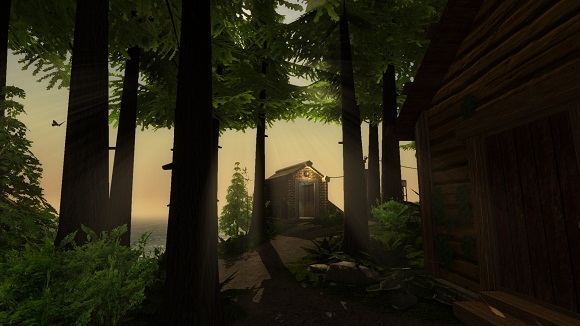
TL: The tools are different for me in design and music – with composing music, the most significant thing is definitely the progression of sample libraries.

To me sound design is very similar to composing, just using different elements of sound instead of instruments to put together soundscapes.ĬDM: Along those lines, can you tell us about some of your favorite studio or production tools that have helped shape your composition or design style? When I was hired at Broderbund, toward the end of the interview they said, “Oh and by the way, this job is about 50% sound design…Do you have any problems with that?” Of course I said, “No”. TL: I didn’t really have any experience other than knowing a lot about digital audio. And with surround sound you get a soundscape that is much more realistic and immersive.ĬDM: How did you get into the sound design side of things? It is always changing with various timings of different sound effects, so it is never the same. Now, we can bring in ambience and crossfade it with other sounds to make the environment much more live and real. So when you wanted to bring in a sound effect, you would have to sacrifice either the music or the ambience. The original Myst only had something like 2 channels of audio – one for music and one for ambience. TL: The technology available now has given us the chance to have a much more dynamic environment. There’s so much more that the processors can do and now we have the space available to do it.ĬDM: I just downloaded the demo for Myst V and the audio and music are incredible. It started out with single voices because memory and processor were so limited, but now that the technology has caught up, what we can do is almost unlimited. Production values have come a long way, too. And being able to stream from the drive has made a huge difference. Sound cards now have all these extra voices, from 24 or 32 available for music, sound design and ambience. So, what has changed the most since then is the technology: resolution, speed, number of available voices, etc. Doing MIDI arrangements was one of the worst experiences and I don’t miss it at all! When I was hired on at Broderbund they wanted to make sure that I could handle it – composing for live recordings and also composing for General MIDI. For The Playroom, along with the digital recordings, I was still doing MIDI arrangements for the old FM chipsets you’d find on soundcards in those days. TL: The most significant shift is the technology. What elements of game audio have changed the most for you over the years? The Playroom was one of the first products to incorporate live recorded audio rather than synthesized music.ĬDM: You’ve been working in the game audio industry for quite awhile. The industry was just getting into digital audio during that time, so we had a live band come in and record. I had just finished up some work with Ice T doing some RnB and Hip-Hop work – kind of ‘New Jack Swing’ – and Broderbund wanted to incorporate some of the stuff I was doing, so I was hired on.īroderbund was one of the first publishers to start using live recorded music in games. Broderbund hired me because they were looking to expand their audio department, and I had a lot of live experience and commercial experience. The first game I worked on was called The Playroom – a children’s game. They were the publishers for Cyan at the time. Avenue Jazz label about 12 years ago and that’s when I got more into composition and began working at Broderbund as a composer and sound designer – around 1993 or 1994. I lived in the Bay Area at the time and eventually stopped touring and became a studio musician and played with orchestras, jazz bands, operas, musicals that would come into town, etc. After I graduated, I toured for several years, playing for a variety of bands and artists.

I was a music major in college, studying trumpet performance. Tim Larkin: I started out playing piano at age 4, and started playing trumpet in 4th grade. Can you give us a snapshot of your musical history and how you got into the game audio business?

Stay tuned.Ĭreate Digital Music: Hi, Tim – thanks for taking the time to speak with us. Hope this means we can look forward to more new Cyan games with Tim Larkin music. Read on for more.Įd: Updated - Cyan appears to have escaped an untimely death. But we expect the Age of Tim Larkin to be just beginning. That game will live up to its title, End of Ages, as Cyan closed shop this month. (Sound samples at his site for both games watch this space for updates on the Myst soundtrack and game.)īrent got to talk to Tim about all aspects of music making, including the upcoming Myst 5 score. Brent Latta talks to Tim Larkin, the composer behind the eagerly-anticipated, upcoming Myst 5 and the current PC/Xbox title Pariah, and featured in the live game music performance festival Video Games Live.


 0 kommentar(er)
0 kommentar(er)
